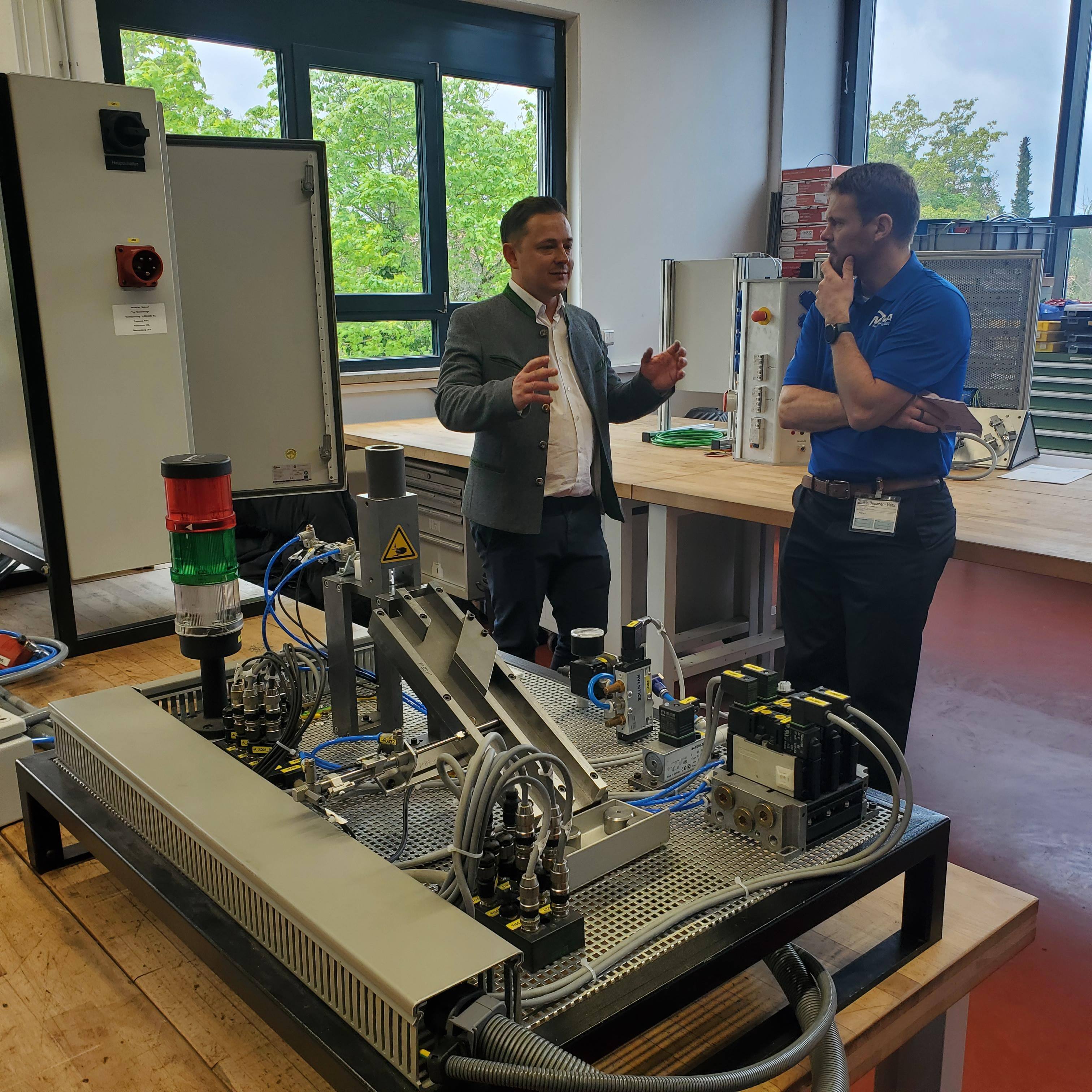European and American manufacturers face similar challenges — with different approaches.
Dear valued members,
As MPMA embarks on a new era with Drive for Five, Minnesota Manufactured, Pipeline Dual-Training grant and many other initiatives, I want to highlight a recent experience that shed some light for me on the directions we’re taking in US workforce development.
Thanks to a generous offer from Spinner North America, and my good friend Salim Awad, I was able to visit Spinner’s open house in Sauerlach, Germany in April. What a great opportunity to see machine design and build at its best and meet the frontline workers assembling the machines.
I was able to experience some cool new technologies they’re launching in addition to visiting the beautiful Bavarian countryside (I even enjoyed a few pretzels and schnitzel along the way)! But the biggest takeaway from my trip was the opportunity to learn about Spinner’s robust apprenticeship program as well as the overall German model.
I met Robin Buchsein, a graduate of Spinner’s Apprenticeship program who is now the North American Sales Manager, and he walked me through the program.
Most of the fundamentals of the German model are no different than the ones we employ in the United States. The difference is, they are simply further ahead in the process.
Here are a few key takeaways:
-
No, Germany does not dictate what path each student takes!
-
German students’ high school ends earlier than in the US, and their career path begins around 16-17 years old.
-
German students, along with their parents, decide whether they’ll go to university or into the skilled trades, military service, or civil service.
-
Training in the trades in Germany, unlike the US, is not reliant upon the schools so much as it is on apprenticeship with employers.
-
German technical schools are merely for teaching fundamentals, whereas the hands-on training occurs on the job.
-
Though we are doing on-the-job training (OJT) and apprenticeship in the US, Germany is simply doing it in a more wide-spread and systematic way. Whereas only top manufacturers in the US follow this model, it’s the norm in Germany.
-
The approach generally involves a multi-year rotational apprenticeship where trainees cycle through several weeks on the job and a week or two at the technical school.
- German manufacturers face the same challenges as we do of engaging youth in skilled trades, and figuring out how to get them to pursue skilled career paths.
Again, I want to thank Spinner for their hospitality and generous support for my trip. Other
than layovers in Europe with a military escort, this was my first exposure to Europe and a once-in- a-lifetime opportunity.
As many of you know from conversations with me over the past few months, the new opportunities MPMA has are more than just exciting for our organization. They are also personally meaningful and exciting for me.
I feel so blessed to have the opportunity to take many of the initiatives we’ve sought out for years. Now we have the staff and resources to drive them forward in a robust and significant way.
Best,
Steve Kalina

